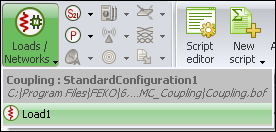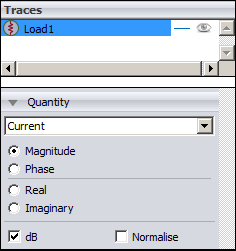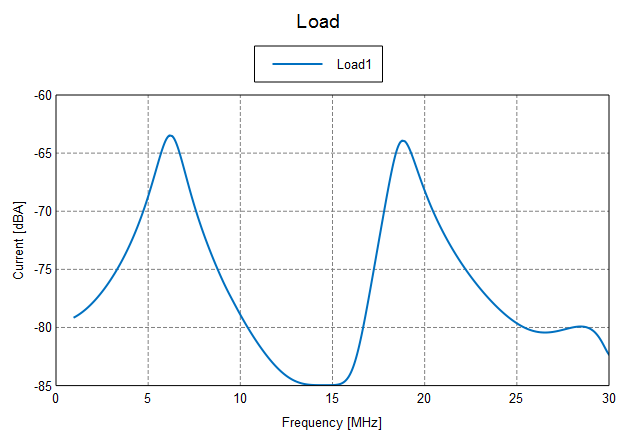Viewing the Load Current
View the load current of the transmission line on a Cartesian graph.
Create a new Cartesian graph.
Add the load current to the Cartesian graph.
View the load current in dB.
See what's new in the latest release.
The Feko Getting Started Guide contains step-by-step instructions on how to get started with Feko.
The example is intended for users with no or little experience with CADFEKO. It makes use of a completed rectangular horn model to familiarise yourself with model creation in CADFEKO and viewing the simulated results in POSTFEKO.
The example is intended for users with no or little experience with CADFEKO. This example is not an example intended for simulation, but rather to familiarise yourself with model creation in CADFEKO.
The example considers the reflection coefficient and impedance of a microstrip patch antenna on a substrate modelled on an infinite substrate and then on a finite substrate.
The example considers the coupling between a typical monopole antenna and a loaded transmission line above a ground plane.
Consider the coupling between a monopole antenna and a loaded transmission line above a ground plane.
Before starting this example, check if the topics discussed in this example are relevant to the intended application and experience level.
Before starting this example, ensure that the system satisfies the minimum requirements.
Create the model geometry using the CAD component, CADFEKO.
Launch POSTFEKO from inside CADFEKO.
View the load current of the transmission line on a Cartesian graph.
View the source input impedance (real part and imaginary part) of the transmission line on a Cartesian graph.
Format the line colour, marker colour and marker style of a trace. Add a line, arrow (single or double), rectangle or circle to the graph to highlight certain aspects of the graph.
This example showed the construction, configuration and solution of an EMC coupling scenario. The model consists of a monopole antenna and transmission line on an infinite PEC ground plane. Coupling of current into the transmission line is viewed from 1 MHz to 30 MHz.
The example considers the transmission and reflection coefficients of a waveguide power divider.
The example considers the optimisation of the gain of a bent dipole in front of a plate.
The Feko Example Guide contains a collection of examples that teaches you Feko concepts and essentials.
Feko is a comprehensive electromagnetic solver with multiple solution methods that is used for electromagnetic field analyses involving 3D objects of arbitrary shapes.
CADFEKO is used to create and mesh the geometry or model mesh, specify the solution settings and calculation requests in a graphical environment.
POSTFEKO, the Feko post processor, is used to display the model (configuration and mesh), results on graphs and 3D views.
EDITFEKO is used to construct advanced models (both the geometry and solution requirements) using a high-level scripting language which includes loops and conditional statements.
One of the key features in Feko is that it includes a broad set of unique and hybridised solution methods. Effective use of Feko features requires an understanding of the available methods.
Feko offers state-of-the-art optimisation engines based on generic algorithm (GA) and other methods, which can be used to automatically optimise the design and determine the optimum solution.
The Feko utilities consist of PREFEKO, OPTFEKO, ADAPTFEKO, the Launcher utility, Updater and the crash reporter.
Feko writes all the results to an ASCII output file .out as well as a binary output file .bof for usage by POSTFEKO. Use the .out file to obtain additional information about the solution.
A large collection of application macros are available for CADFEKO and POSTFEKO.
CADFEKO and POSTFEKO have a powerful, fast, lightweight scripting language integrated into the application allowing you to create models, get hold of simulation results and model configuration information as well as manipulation of data and automate repetitive tasks.
Reference information is provided in the appendix.
The Feko Getting Started Guide contains step-by-step instructions on how to get started with Feko.
The example considers the coupling between a typical monopole antenna and a loaded transmission line above a ground plane.
Launch POSTFEKO from inside CADFEKO.
View the load current of the transmission line on a Cartesian graph.
View the load current of the transmission line on a Cartesian graph.
Create a new Cartesian graph.
Add the load current to the Cartesian graph.

View the load current in dB.


(c) 2020. Altair Engineering Inc. All Rights Reserved.